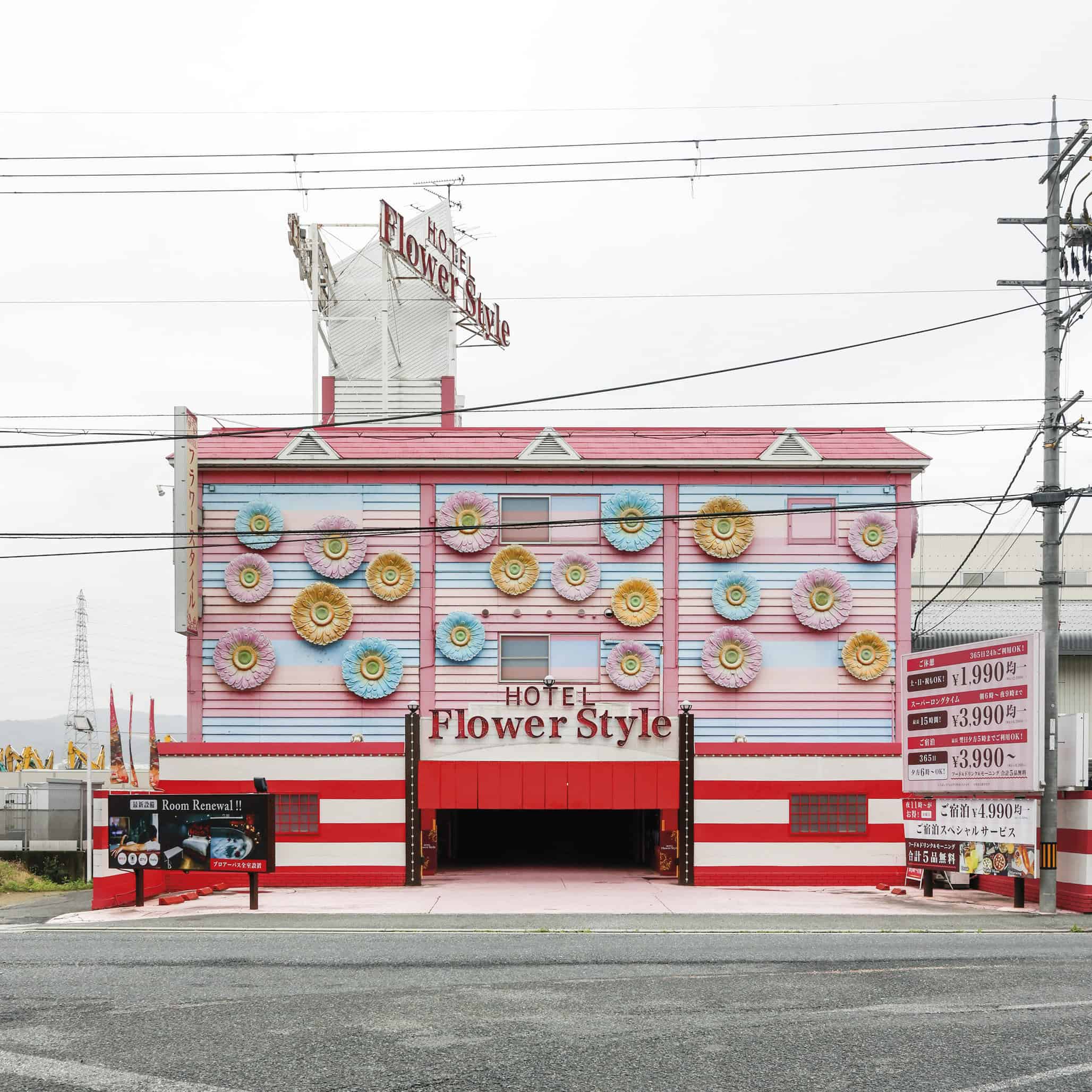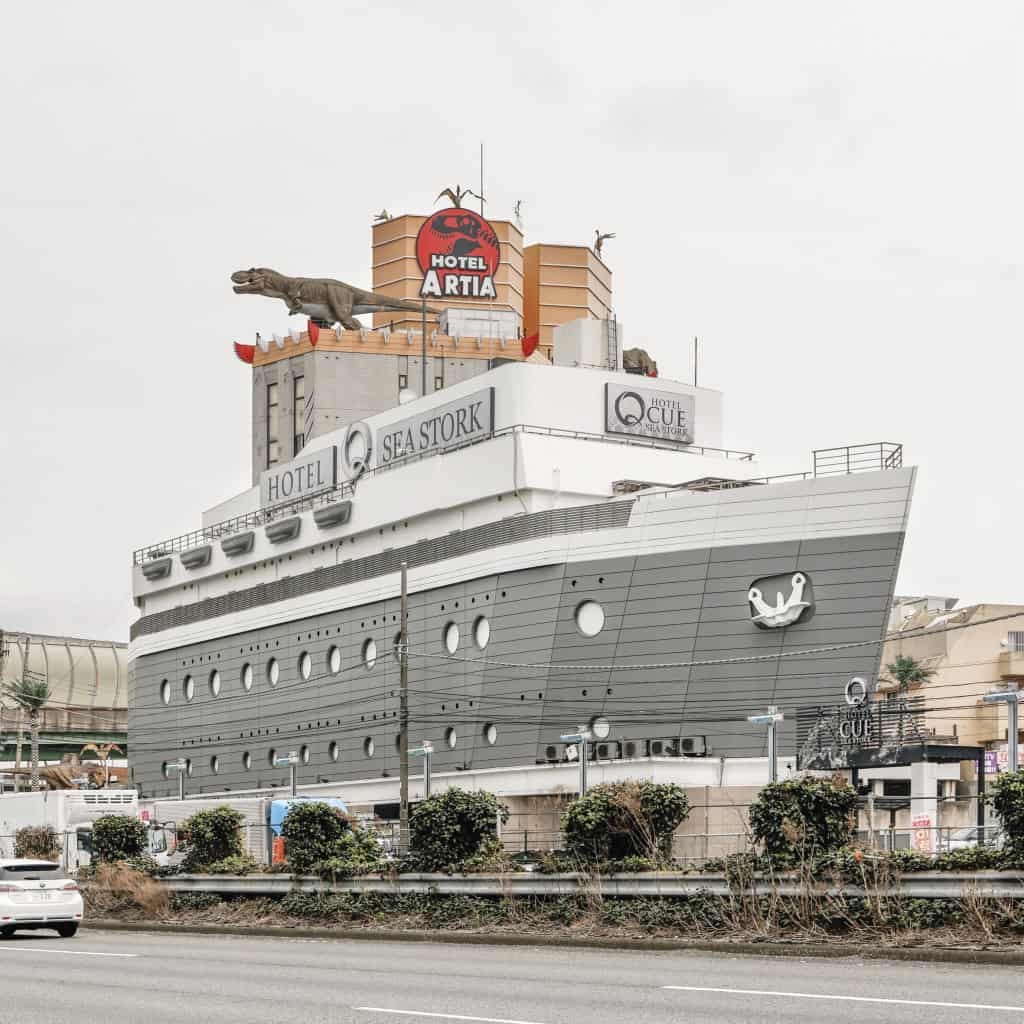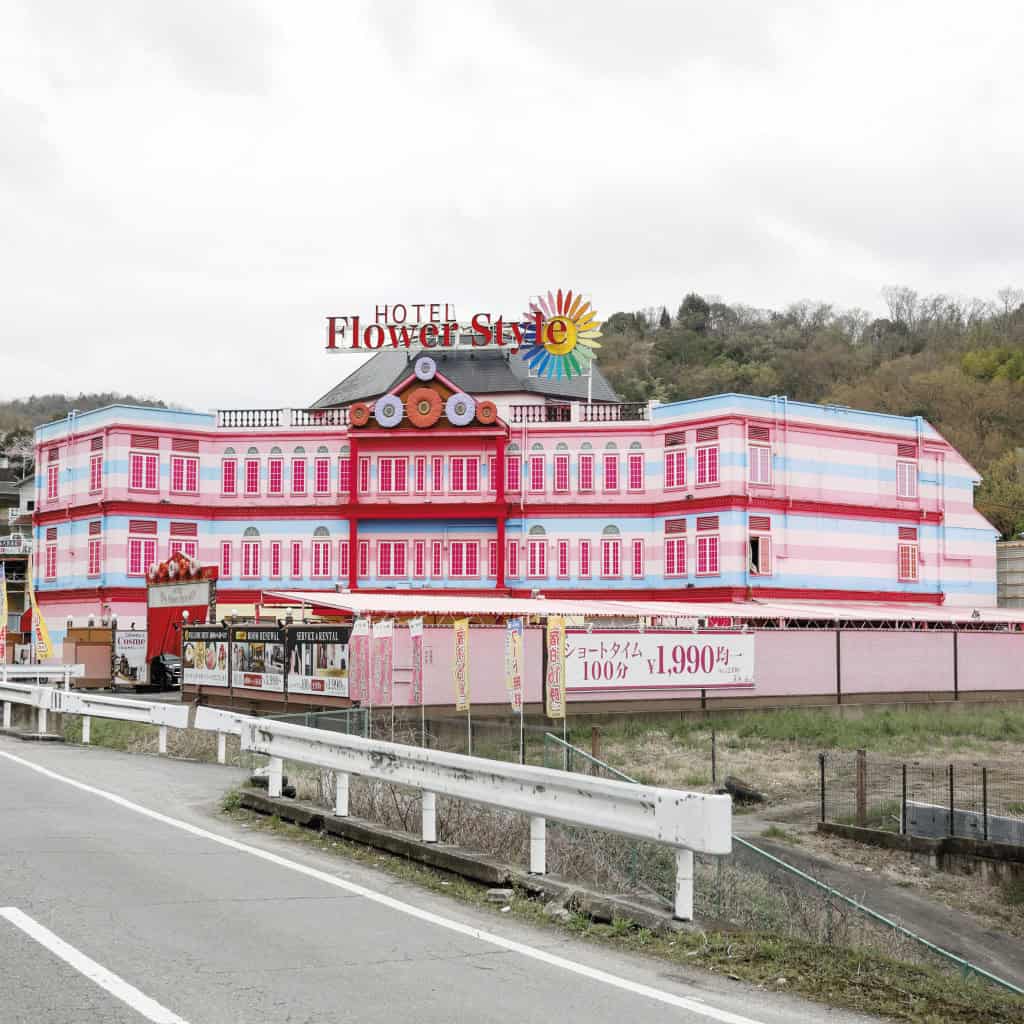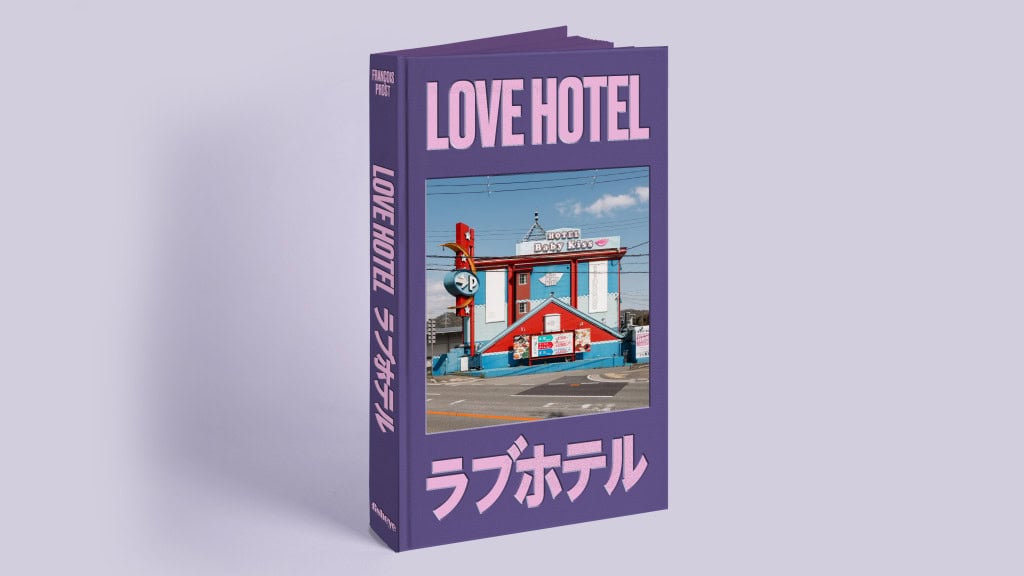
LOVE HOTEL
A collection of photographs of Japanese Love Hotels
Love hotels — or rabuho — emerged post-war as a response to rigid societal norms and cramped domestic living. With multi-generational households and strict codes of public decorum, privacy for couples became a near-luxury. These hotels filled that void, becoming neutral grounds for both rebellion and romance.
Love Hotel, the Book is a collection of photographs of the facades of these Japanese Love Hotels. Taken in 2023 during a road trip between Tokyo and Shikoku Island. Photographer François Prost paints
a vernacular portrait of Japan, made by ordinary roadsides, faded signs and colourful facades.
Emblematic of Japanese popular culture. Originally these Love Hotels were intended to offer a space for
Japanese couples to conduct their amorous activities. Given the lack of privacy within the small
family home, and the multi generational occupation of the home. Love Hotels offers a room extension dedicated to the act of love, far removed from family distractions.
Documenting the facades of love hotels
The idea for this project came during a trip to Japan. Where the photographer Francois Prost was invited topresent my “Gentlemen’s Club” series. The gallery suggested that he work on a new project while in Japan. It felt natural to focus on documenting the facades of love hotels.
Love hotels are a unique and deeply ingrained part of Japanese culture. Offering a fascinating glimpse into Japanese society. ‘These hotels have a very “talkative” quality visually. They’re expressive in their design, reflecting aspects of local culture, values, and even fantasies.’ François says
François continues. ‘In many ways, my approach to photographing love hotels mirrors my other projects. Which I consider a form of landscape photography. I choose specific types of venues in each country.
Those with distinct, often kitschy, or roadside architecture—and photograph them across the
region with a consistent framing style. This allows me to create a portrait of a country through
the lens of its vernacular architecture. I’m drawn to the aesthetic of these places, and how their
facades reveal something about the people who inhabit or frequent them.’
Love hotels are ubiquitous in Japan. Estimates suggest anywhere between 10,000 and 40,000
across the country. Designed to appeal to young people, many have bold eye-catching architecture. Aiming to evoke a sense of romance, escape, and fantasy, Whilst also feeling safe and inviting. ‘It’s why some of these places have an almost “Disney-like” aesthetic, playful yet carefully curated.’


IRK: Was there a particular theme that stood out?
François ‘Yes across multiple locations was the recurring use of boat replicas. Huge ships, often docked in front of the hotel. I think it’s a way to evoke the sense of cruising into a love paradise. With a subtle nod to Japan’s rich maritime history. For the book that will accompany this series, we’re printing a special poster titled “Love Boat,”. Showcasing a series of these boat-shaped facades.’
I also found numerous castle replicas, evoking a sense of fantasy, like something out of a
Cinderella story. These were particularly common in the 1960s and 70s, a time when these
hotels were first designed and built. There’s a clear connection between these architectural
choices and the era in which they were created. The design trends of each era are very much
reflected in the structures.
Franponais—French-inspired names
Another intriguing aspect of my findings was the use of “franponais”. French-inspired names that don’t always have a real meaning but are used for their romantic or sophisticated sound. Interestingly, this phenomenon is something very particular to Japanese culture.
While these venues are still used primarily for romantic encounters. They’ve also become spots for young people to gather, play karaoke, and party. Blurring the lines between love hotels and regular entertainment venues.
LOVE HOTEL exhibition
An exhibition of the project is running until May 18th in Paris. At Galerie du Jour – Agnès b., la Fab – Place Jean-Michel Basquiat, 75013 Paris.
The book LOVE HOTELS is available through Antenne Books
Francois Prost is an award-winning Parisian photographer and art director born in Lyon in 1980.

Share this post
Our editor at large Daniel Syrett, or SYRETT, which the artist is better known as, brings his extensive knowledge of the fashion and art industries to his role here at IRK Magazine. While SYRETT is recognized for his glossy Haute-Couture pieces, Daniel is also the founder and curator of Runway Gallery, the fashion-focused gallery that represents some familiar names from IRK, including our founders, French Cowboy. Daniel may be making his mark on the vibrant London art scene at present; however, his unique style is based on different influences from Daniel Syrett’s past.
After studying fashion at Jacob Kramer College of Art in his home city of Leeds, Daniel moved to Liverpool, where his style was influenced by the alternative creative’s of Merseyside. After successfully launching one of the most exclusive nightclubs in the country, Dan travelled to London to work as a freelance stylist, in a move which saw his career in fashion skyrocket. To date, Daniel Syrett has worked alongside some of the most prestigious names in the industry, including Elle, All Saints, EMI, the BBC, and London Fashion Week. Among his latest collaborations, SYRETT is most recognised for his partnership with True Brit Nail Varnish which is portrayed through his glossy art pieces. SYRETT uses the varnish as a medium to create highly polished, and highly fashionable works of art which expose the intertwining relationship between the fashion and art worlds. This connection is epitomised by his most recent collection in which SYRETT named each piece after some of the most iconic designers, including Alexander, Jean-Paul, Yves and Vivienne, with the latter designer being a frequent visitor to Daniel’s former boutique, Controversy.
As a result of working with these stylish clients, Daniel Syrett has solidified a global reputation as both a fashion stylist and an artist. His work has graced everywhere from New York and Florence, to the pastel-glazed buildings on Miami’s South Beach, where an exhibition of SYRETT’S work is also planned for the near future. It is, however, unsurprising that Daniel Syrett has reached such heights, after seeing his work published in over 200 National and International publications, alongside several other books, including the Booth-Clibborn Edition of the counter-culture book, High Flyers.
Alongside his role at IRK, Daniel continues to make his name in London and beyond, most specifically through Beautalism: the emerging art movement which is shaping the art scene across the capital. As the founder of the Beautalists, Daniel Syrett aims to bridge the gap between the public and the artist and make art accessible to all. This is all in a days work for Dan, who balances his Runway Gallery empire with his work as an artist. With other exciting partnerships launching with the W Hotel, Soho’s Century Club and ROOME, the future for the head of Beautalism looks beautiful indeed.
Biography by Megan Slack, Contributing Editor at Magazine by Runway Gallery.
Read Next




